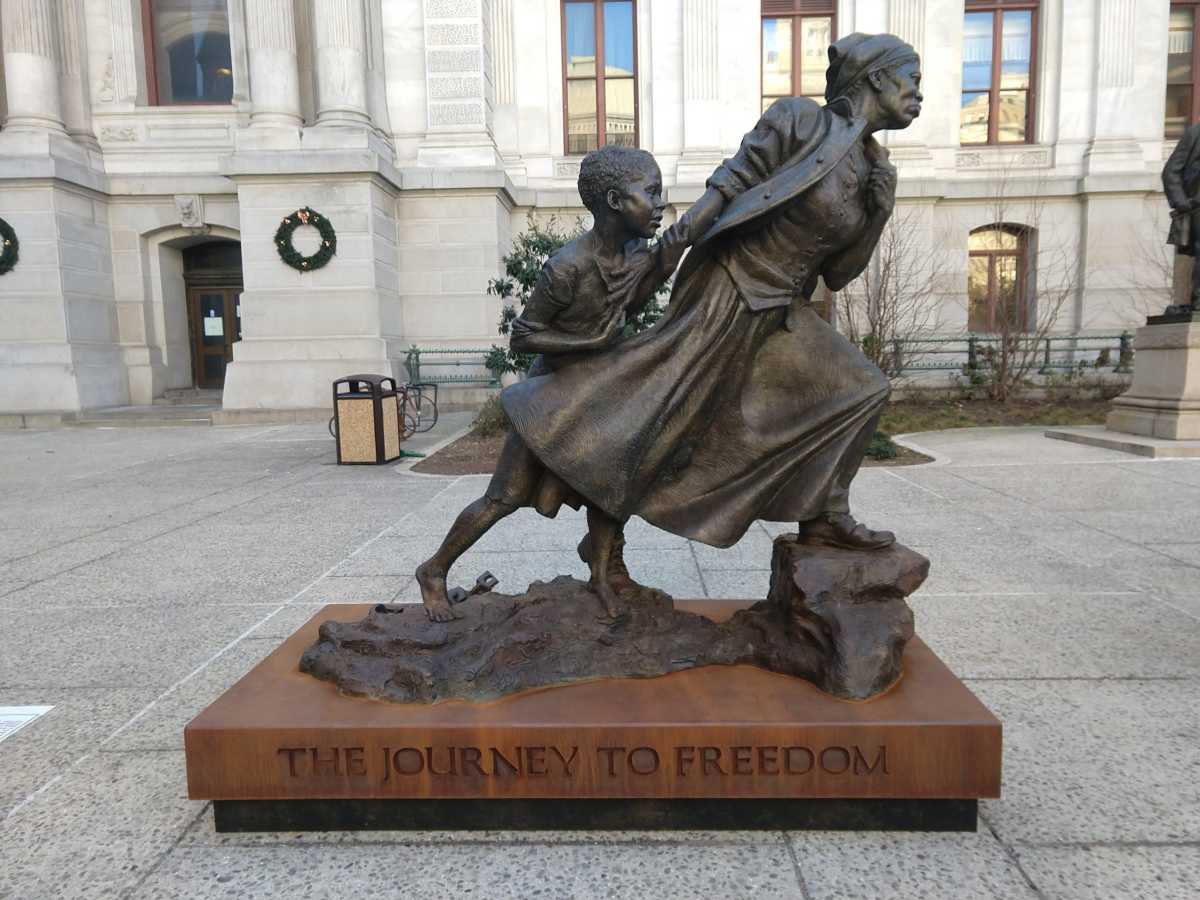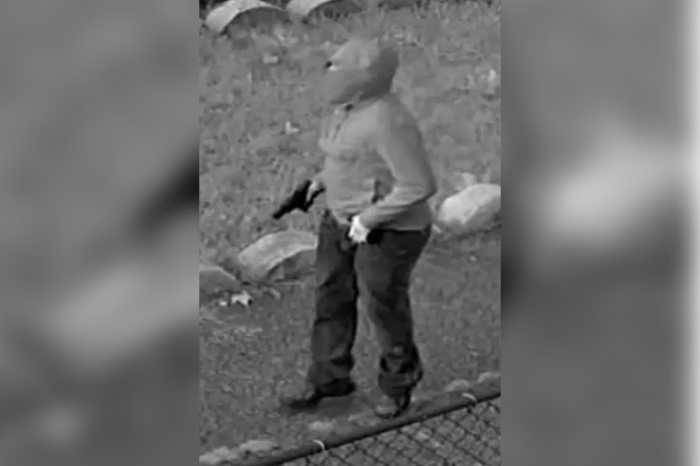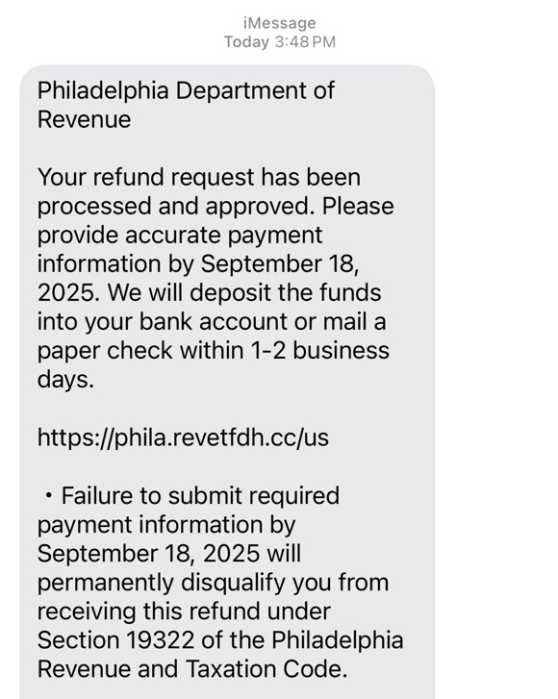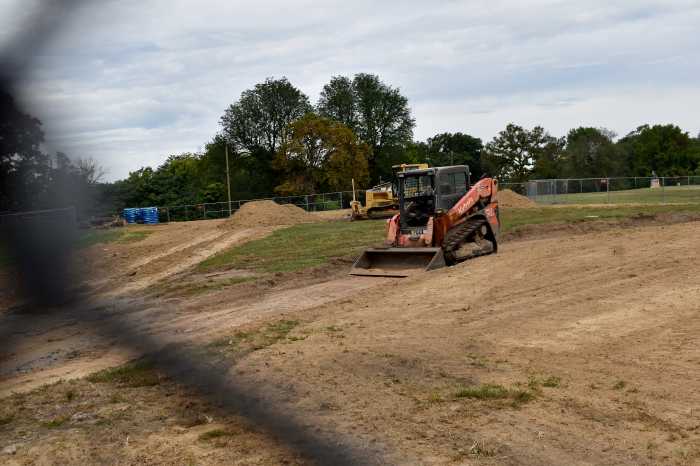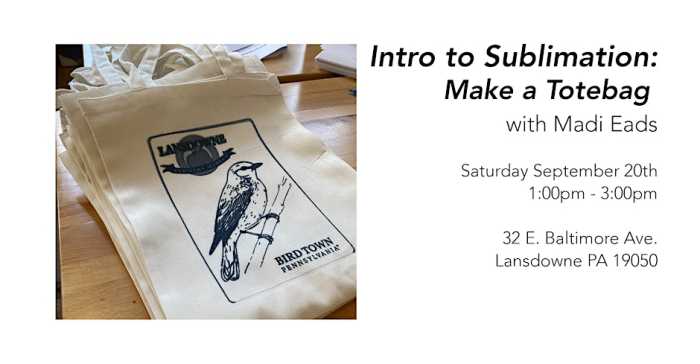On Tuesday morning, singer Valerie Gay braved bitterly cold temperatures outside of City Hall and told a gathered crowd that abolitionist Harriet Tubman was Moses for many people.
Gay explained that Tubman, a former slave turned activist and suffragette who guided over a dozen journeys across the Underground Railroad, brought people to freedom so they could “wade in the water.” And with those words, Gay began to sing.
Wade in the water
Wade in the water, children
Wade in the water
God is gonna trouble these waters.
Several women used percussion instruments to accompany Gay’s hymnal, lifting her vocals above the frigid winds that pierced the building’s north apron Tuesday. The musicians built to a crescendo with each passing lyric, echoing the urgency felt every time Tubman led a journey to freedom.
“Harriet Tubman sang spirituals as part of her rescue missions,” said Kelly Lee, executive director of the city’s Office of Arts, Culture, and the Creative Economy. “She would change the tempo in order to give messages to people whether or not it was safe to continue with the journey,” Lee continued.
Marking the convergence of several celebrations, including Black History Month, Women’s History Month, and Harriet Tubman’s 200th birthday, Lee’s office unveiled a temporary statue of the abolitionist icon this week in front of City Hall.
Scores of partner organizations have joined the effort, with groups such as African American Museum of Philadelphia, Cecil B. Moore Freedom Fighters, the Colored Girls Museum, Harriett’s Bookshop, Mother Bethel AME Church and others hosting virtual and in-person events.
Designed by North Carolina-based artist Wesley Wofford of the Wofford Sculpture Studio, the 9-foot tall installation titled “The Journey to Freedom” will sit on the building’s north side through March 31. Tuesday’s unveiling coincided with the announcement of over 30 virtual and in-person programs throughout the city, including exhibits about Harriet Tubman’s life and screenings of the film “Harriet,” which focus on themes of human rights and freedom, strong women, equality and more.
City leadership showed up en masse for the unveiling wearing hats, gloves, scarves and masks, altering the event to be outdoors-only at the last minute in light of surging Omicron cases. Joining Lee, Gay and Wofford at the celebration were First Deputy Managing Director Vanessa Garrett-Harley, Parks & Recreation Commissioner Kathryn Ott Lovell and Public Art Director Marguerite Anglin, among others. Mayor Jim Kenney spoke to the gathered crowd about the significance of the statue.
“Telling these stories through public art is vital for learning and reflection, connecting with our communities, and understanding our histories,” Mayor Kenney said. “I am particularly proud that the City of Philadelphia is hosting the temporary installation of Harriet Tubman on the North Apron of City Hall while a monument to another important Black activist, Octavius Catto, lives on the South Apron.”
“The Journey to Freedom” comes to Philadelphia at a time when conversations about public art — historical statues in particular — continue to evolve and take on new meaning. Over the past few years, deeper conversations about race and identity led individuals, community organizations and state legislatures to push for the removal of confederate monuments across the country. In Philadelphia, officials took down a statue of former Mayor Frank Rizzo, a man whose racial biases caused untold harm in Black communities.
Wofford, the artist, believes the Tubman piece is a new chapter in the ongoing conversation about public art. “There’s a huge cultural diversity gap in our public collections nationwide, including the city of Philadelphia and I think that’s starting to be corrected,” Wofford said.
“The people are speaking,” he added. “These statues need to represent all of us, not just one side of the story.”
Authenticity is crucial to Wofford’s artistic process, which included a deep study of Tubman’s life before working on his first model. While the sculpture embodies every slave that she brought to freedom, the image depicts her final journey with a young boy she later adopted. According to Wofford, at the base of the work is the Delaware Peninsula, which signifies that Tubman is stepping out of slavery in Cambridge, Maryland, and into freedom in Pennsylvania.
“She left Cambridge, went to Philadelphia,” Wofford said. “The significance of the piece being here in front of City Hall, it’s built into the piece.
On Tuesday morning, Gay, the vocalist, backed by a cascade of percussion instruments, led all of Philadelphia on “The Journey to Freedom.”
See those children all dressed in white
God is gonna trouble the water
It looks like the children of the Israelites
God is gonna trouble the water
For more information about the celebration of Harriet Tubman, including the schedule of programs, visit creativephl.org/harriet-tubman.



